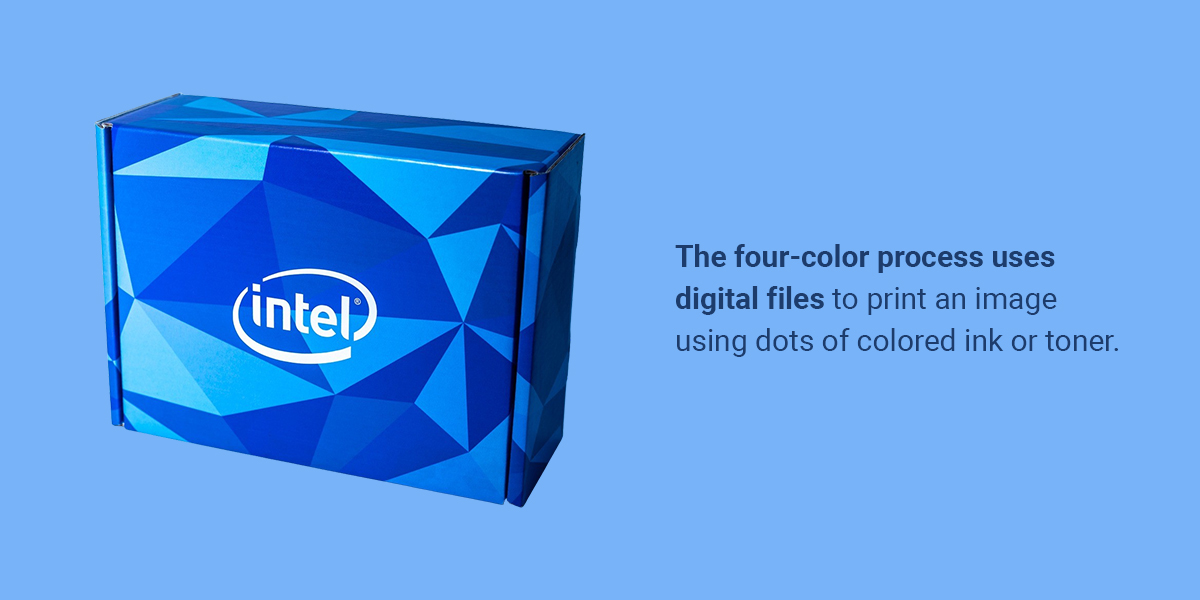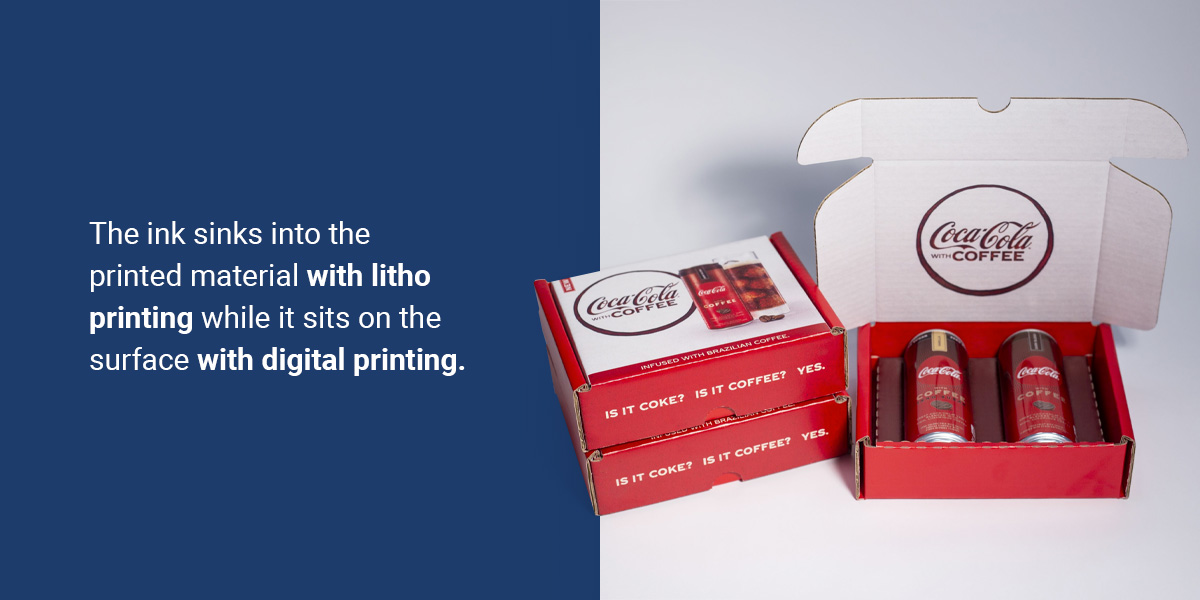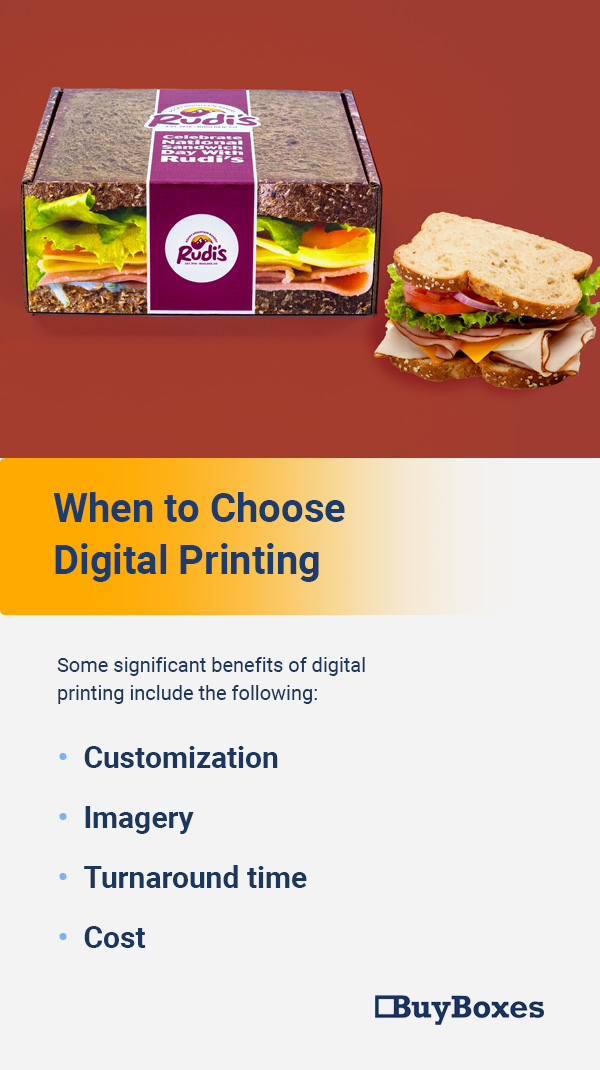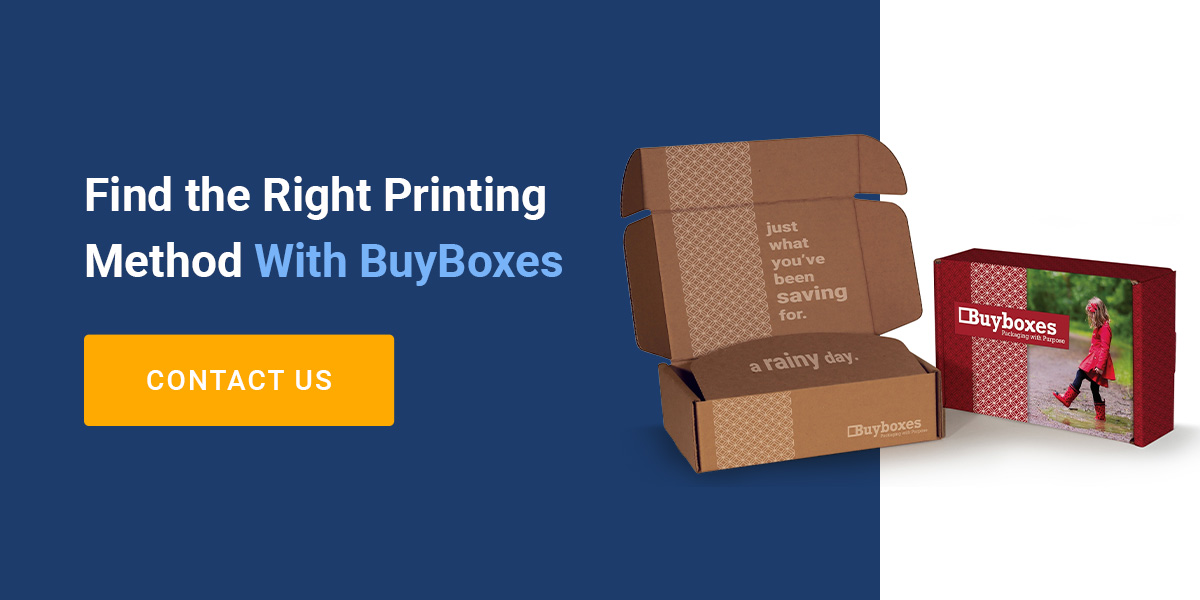Digital vs. Lithographic Printing
Your packaging is one of the first ways a consumer interacts with your products, helping people recognize your brand and judge its quality. Whether they’re browsing a store or receiving an online order, packaging promotes your brand and its messages to your audience.
Product packaging should be one of the top marketing factors businesses consider. The higher the quality of your packaging, the more likely consumers will notice your products. They may remember your brand and seek it out the next time they go shopping. If they buy your products regularly, easily recognizable packaging will make them easier to find.
Part of creating quality packaging is choosing the proper printing method. While you have several professional printing methods to choose from, digital and lithographic printing are two of the most popular among businesses. Both techniques offer a range of advantages. This guide will explain the difference between lithographic and digital printing and when to use them.
What Is Lithographic Printing?
Lithographic printing — also known as litho printing, litho lamination, offset lithography or offset printing — is one of the main types of professional printing that industries worldwide use to create high-quality packaging.
The core principle of litho printing is that water and oil don’t easily mix. Litho printing uses high pressure to transfer an image from a treated metal plate onto the printing material, also known as the substrate. The plate’s treatment lets the design attract an oil-based ink and repel water, while blank areas draw water and repel ink. This way, the ink remains only on the parts that will transfer to the substrate.
Lithography is one of the oldest printing methods still in use. Traditional lithographic printing, also called direct litho printing, uses a stone plate to transfer an image to a new substrate. Modern litho laminate printing uses plates made from many materials, including aluminum, zinc, polyester, mylar or paper, though most professional printers use aluminum plates.
The modern litho-printing process includes two blanket rollers in the process. The print plate transfers the image to the rollers, and the substrate passes through them. The rollers press the image onto one or both sides of the substrate, depending on whether the print is one or two-sided. The name offset lithographic printing comes from the fact that it “offsets” the image to another surface before copying it onto the desired substrate.
Benefits of Litho Printing
Litho laminate printing is another name for litho printing. This name comes from the practice of printing onto a surface and laminating it onto a rougher material, such as corrugated cardboard. This process makes it easy for printers to create highly detailed designs on different textured materials. Many brands prefer litho printing, as they can still get high-quality designs on protective corrugated boxes with relative ease.
Another key benefit of lithographic printing is the ability to print large quantities at high speed while maintaining the quality and detail of a design. While the initial setup is time-consuming, once you’ve finished, printing is quick.
What Is Digital Printing?

Digital printing is quickly becoming one of the most popular professional printing methods. The four-color process uses digital files to print an image using dots of colored ink or toner. In comparison to litho printing, digital printing is relatively simple and economical. You don’t need printing plates when setting up a print run, only a high-resolution image or design in a PDF or similar digital file type. Once you send that file to the printers, they’ll copy it onto the desired material.
Benefits of Digital Printing
There are several reasons why digital printing is becoming increasingly popular. Some of the critical reasons for its growing popularity include the following:
- Setup is considerably easier than other types of printing, as there’s no need for print plates or color proofs.
- Digital printing eliminates the need for extra chemicals or coatings for the printing plates.
- It’s easy to print several different designs in one run.
- Turnaround times are shorter.
- There is no limit on minimum orders.
Another significant advantage of digital printing is that the technology continues to improve. Professional digital printers are becoming more accurate in their Pantone matching abilities, allowing them to print a wider variety of designs.
Differences Between Digital and Lithographic Printing
Digital and lithographic printing are two unique and vastly different printing methods. While a lithograph uses a system of rollers and plates to transfer a design to packaging, digital printing creates copies by transferring ink directly onto a surface.
The differences between a lithograph and a print affect everything from how quickly you can print to the finish of the printing to the colors you can use. Despite their differences — or maybe because of them — they are two of the most popular professional printing methods.
Many companies use both of these methods for different packaging orders. The printing method you choose will depend on your budget, the quality you want and your design’s colors. Here is a breakdown of the main differences between digital and litho printing:
Speed
How quickly you can print using litho or digital printing is based on two elements — the setup process and actual printing.
Digital printing is significantly faster to set up. The longest part of digital printing is creating the design and getting it approved. Once you upload your design to a computer, you can start printing.
Setting up lithographic printing takes longer than digital since the printer will need to make printing plates for your design. However, once the designs are complete and set up, litho printing is much faster than digital printing.
If you want to print a moderate number of boxes in a short time, digital printing is ideal. Think limited edition boxes or packaging that people will only use once for a short time. For high-volume printing over an extended period, lithographic printing is best. You can use litho printing for your usual packaging printing throughout the year, as it can easily keep up with demand.
Cost
The minimal setup for digital printing can help keep its cost down — digital printing costs come from the labor and which substrate and ink you choose. Litho printing has an initial setup fee to create the plates on top of the typical printing costs, including ink, labor and material.
Digital printing is quick to set up, and you can print a specific number of packaging units, making it the most cost-effective option for small print runs. The upfront setup fee for litho printing can make it more expensive than digital when printing short runs with limited numbers.
In comparison, lithographic printing is more cost-effective for long runs with high volumes, as the setup fee for the printing plates is a one-time cost. Once you’ve paid for the setup, you can reuse the printing plates as often as you need, lowering the cost per unit when printing high volumes.
Quality



The quality of your packaging is paramount to creating a good impression with customers. People perceive products with higher-quality packaging as being better quality.
While litho printing typically produces the highest quality packaging prints, digital printing technology has advanced considerably over the past few years. Digital printing can now achieve higher quality prints, even with low-resolution images.
The key difference between the two is how the ink behaves. The ink sinks into the printed material with litho printing while it sits on the surface with digital printing. As a result, the same design can look slightly different depending on your chosen method.
Of the two techniques, litho printing offers better finishes, especially with large blocks of color, metallic inks and spot lamination. You’ll likely want to choose lithographic printing if you want high-quality printed packaging.
Capabilities
Litho printing also has a broader range of finishes, including UV varnishing, laminating and other protective finishes. The finishes will be softer than digital printing, resulting in less pixelation.
Lithographic printing can Pantone-match colors, ensuring accurate prints of unique brand or design colors. You can even print metallic inks such as gold or silver. While digital printing is improving rapidly regarding its Pantone and spot-matching capabilities, it is typically still limited to four-color printing.
On the other hand, digital printing makes personalization easier. The lower setup costs and ease with which you can change designs mean you can print different packaging more quickly and cost-effectively. Achieving the same level of personalization with litho printing would cost significantly more, as each design would need unique printing plates. It would also take far longer, as physically swapping and rearranging the printing plates for each design would slow the process.
Materials
Litho printing is exceptionally versatile in the materials it can print on due to the minimal heat the printing machines generate and the positioning of the blanket rollers. As a result, it’s possible to print on materials of varying thicknesses. Lithographic printing is not limited to paper — it can also print on plastic, wood and metal. Offset printing can also print high-quality designs on rough and textured materials.
Digital printers have a narrower range of materials they can print on compared to lithographic printing. Digital printing can generally only produce high-quality prints on smooth paper and cardboard.
Which Printing Technique Is Best for You?
Each printing technique has its benefits, and the one you decide to use will depend on several factors. Your branding design, budget, timeline and even the packaging material you choose will play a crucial role in what printing method will work best for you.
Remember, there is no right or wrong answer. The printing technique you use will vary — you can even choose to use multiple printing methods, particularly when it comes to seasonal or limited-edition packaging runs. You may choose digital printing for these shorter, smaller runs while relying on lithographic printing for your usual high-volume year-round printing.
When to Choose Digital Printing
Digital printing technology is constantly improving to provide higher-quality prints. These improvements have made it one of the most popular printing options over the past few years. Its versatility and the personalization opportunities it offers make it an ideal choice for consumers who want more from brands regarding packaging and marketing.
Some significant benefits of digital printing include the following:
- Customization: Digital printing can easily print customized boxes and other packaging materials.
- Imagery: You can print photo-realistic imagery on your packaging, making digital printing ideal for photographs and complex designs.
- Turnaround time: Since digital printing requires no setup, you can complete your print runs on a short deadline.
- Cost: Digital printing can be more cost-effective than other types of printing.
So when is it best to use digital printing for your packaging? Here are a few times when digital printing may be the best option:
- You have a short run or need samples.
- You need your packaging on a tight deadline.
- You want personalized, limited edition or varied prints for your products.
- You have a photo-realistic or complex design.
- You want a more cost-effective printing method.
- You are using a simple design with few colors.
- You want printing impressions on your packaging.
When to Choose Lithographic Printing
Litho printing is one of the oldest printing methods used today. It produces clear, high-resolution images and smooth finishes for your packaging. A few benefits of lithographic printing include the following:
- Quality: Lithographic printing can produce high-quality prints using several finishes and coatings.
- Colors: Lithographic printing machines can use up to six colors, including metallic inks.
- Quantity: You can print high volumes of packaging in a relatively short time.
- Cost: Litho printing is more economical for long, high-quantity print runs.
- Versatile: Litho printing works on cardboard, paper, metal, wood or plastic. You can also have different types of finishes for your packaging.
There are many advantages to using lithographic printing. You might choose lithographic printing for the following reasons:
- You have a flat design with intricate details.
- There are more than four colors in your design.
- You need a cost-effective way to print large quantities.
- Your design contains photo-realistic elements.
- You want to impress clients or consumers with a high-quality, high-resolution design.
- The packaging you have chosen is textured paper, corrugated cardboard, plastic, wood or metal.
Find the Right Printing Method With BuyBoxes
Your business’s printing needs are unique and subject to change over time. Choosing the proper printing technique for your packaging takes significant consideration. You have several factors to consider, including your deadline, packaging material, design, print run volume and the impression you want to make on your customers.
At BuyBoxes, we work with you to understand your specific packaging and printing needs. Our experienced team will be able to answer any questions you have to help you work out the best printing options for your needs.
Contact BuyBoxes today for your packaging printing needs.



